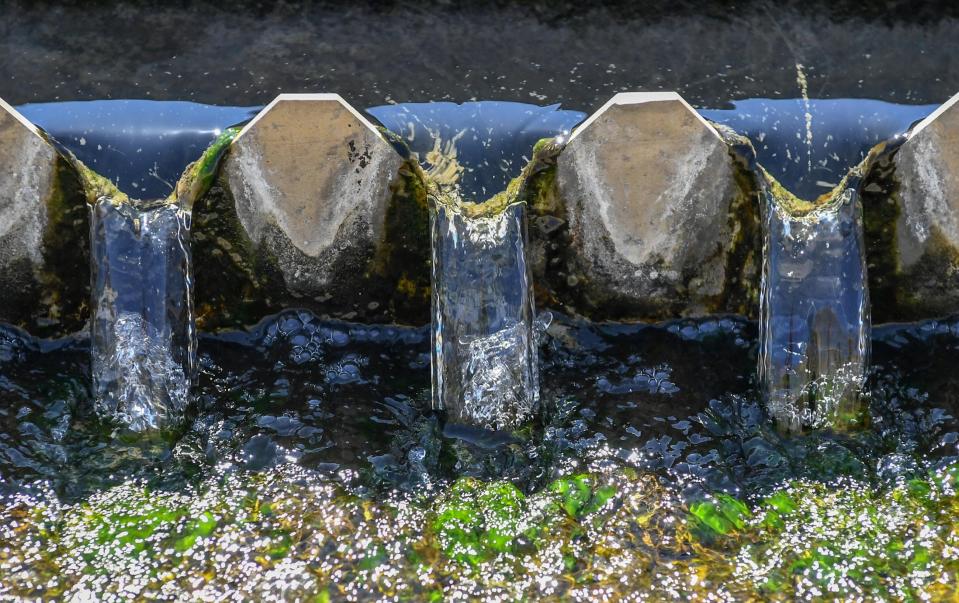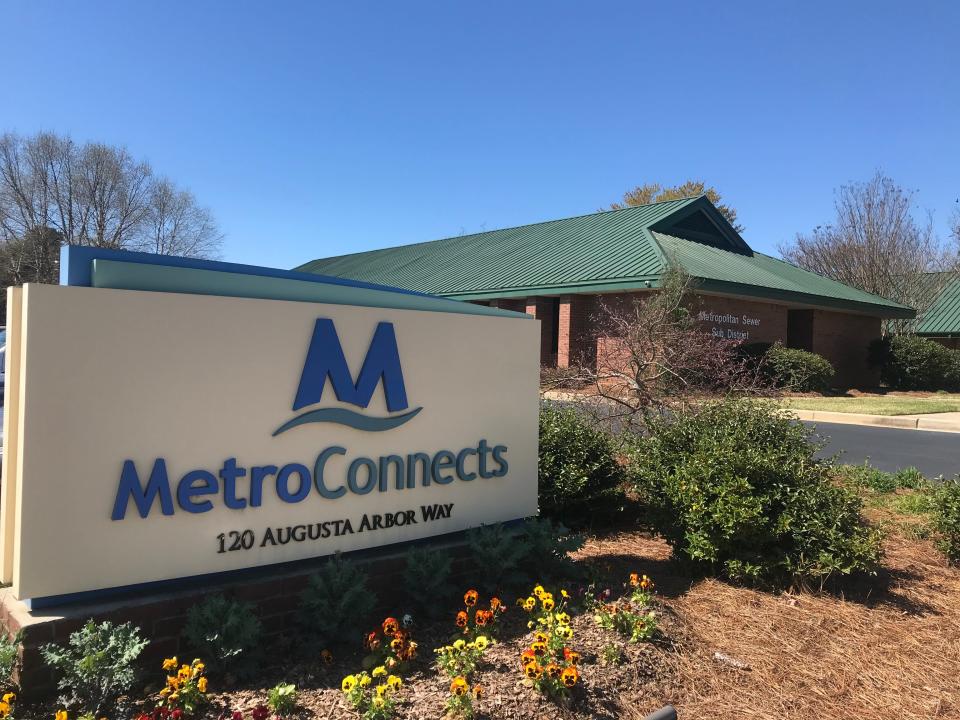Mills Mill's 100-year-old sewer to be replaced as part of clean water initiative
One of Greenville’s former mill villages is getting a sewer overhaul this spring.
Mills Mill, near Augusta Road, will be the first of an eight-part initiative to replace aging sewer infrastructure. MetroConnects, a sewer subdistrict serving Greenville and Travelers Rest, will helm the project. They will break ground on the project Friday morning.
MetroConnects will fix and strengthen parts of the original sewer line, but they expect to replace most of the pipes entirely.
"These lines have been in the ground for more than 100 years, in most cases," Public Relations and Communication Manager Carolyn Farr Shanesy said about the original sewer line. "It’s time for replacement. Many of them have had cracks or fissures, or they've had roots grown into them."

The Mills Mill project is estimated to cost roughly $13 million and will take about two years. The funding comes from South Carolina’s Rural Infrastructure Authority and Greenville County’s American Rescue Plan Act funding, so the burden won’t fall on ratepayers, Shanesy said.
Mills Mill and the other seven mills that will receive similar treatment in Greenville County are all part of the Clean Water Forward initiative. The Clean Water Forward initiative will focus on restoring and replacing aging sewer infrastructure in eight of Greenville’s mill villages using grant funding.
More than 230 residents and 19 businesses will be impacted by the Mills Mill sewer line upgrades, Shanesy said.
More: The EPA set limits on 'forever chemicals': What does that mean for the Upstate?
Why do the pipes need to be replaced?
The century-old pipes are constructed from clay which makes it easier for stormwater to seep through the cracks.
Stormwater is processed in a separate sewer system from wastewater to cut down on the amount of water that needs treatment. When stormwater gets mixed with wastewater in the sewer pipes, it can cause an influx of water that requires treatment at wastewater processing facilities. Or worse, Pipes can become clogged or overwrought and overflow a mixture of waste and water into the ground around them.
Water that enters through the cracked pipes is what MetroConnects employees call "inflow and infiltration" or I&I.
The mill systems have the most I&I, Shanesy said. Because the pipes are among the oldest in the county, they’re also some of the leakiest. The mill village sewer systems are where MetroConnects sees the most pipe damage.
Sustainability with Sarah: Why does polluted stormwater flow into rivers and lakes?
Additionally, the construction at the time the mills were built was different than modern sewer lines. While today’s pipes go under roads, many of the pipes in the mill villages go under people’s homes. In Mills Mill specifically, there are nearly 80 manholes, or sewer entrances. Some of them are in people’s basements, Shanesy said.
When overflow does occur, it can come out of manholes. MetroConnects will fill or relocate the manholes to direct the water away from people’s homes.
Because many of the pipes are too old to repair, old systems will be abandoned and sealed. MetroConnects is working with homeowners in the area ahead of the project.
New pipes will go under the road and away from residences, Shanesy said. Greenville Water will also update their own infrastructure in the Mills Mill area. By the end of the project, about two-and-a-half miles of roadway will also be repaved.

Why does the project focus on mills?
Mills are a unique and crucial part of the Upstate’s history. Greenville had 16 functioning mills in the early 1930s, eight of which are now served by the MetroConnects system. At the time, Greenville was considered the textile capital of the world.
The mill villages are part of Greenville’s "textile crescent" because of their layout.
The Mills Mill was chartered in July 1896 by Otis Prentiss Mills and his son-in-law, Walter Moore. The mill opened in 1897 and roughly 200 people lived in the mill village.
By 1903, the village population was roughly 1,000 people. The mill employed about 450 people and the village included a YMCA, a school, a store and a church.
Moore took over the mill in 1915 after Mills died, but sold it to the Reeves brothers of Spartanburg in 1918. By 1927, work conditions at the mill had deteriorated and nearly 500 employees went on strike. The company sold the village in the 1950s and the mill closed in 1979.
The next mill MetroConnects will focus on is the Dunean Mill Village. Afterward, they will focus on the Union Bleachery in Taylors. Each of the projects will happen simultaneously, Shanesy said.
More: Conservationists ask SC lawmakers for energy and agriculture support during lobby day
The only holdup is funding. The Dunean Mill Village project has received the same funding as the Mills Mill project, and the Union Bleachery received other federal funding. Shanesy said MetroConnects is focused on ensuring ratepayers do not fit the bill for any of the construction.
"We’re trying to be very aggressive in going after grant money to alleviate some of that concern," she said. "None of that will fall on the ratepayers."
MetroConnects is working closely with Renewable Water Resources (ReWa), Greenville’s wastewater treatment group, on the project.
They’ve also received funding for the mill projects from South Carolina’s Rural Infrastructure Authority. South Carolina’s General Assembly allocated $1.4 billion to the RIA to improve infrastructure across the state. Part of the funding was dedicated to wastewater projects, such as MetroConnects.
"We are extremely grateful to the General Assembly, to ReWa and to Greenville County for investing in the future of water and wastewater throughout the state. This is the first time we've ever seen dedicated monies for things of this nature," Shanesy said.
Sarah Swetlik covers climate change and environmental issues in South Carolina's Upstate for The Greenville News. Reach her at sswetlik@gannett.com or on X at @sarahgswetlik.
Have a question for Sustainability with Sarah? Ask here or email sswetlik@gannett.com.
This article originally appeared on Greenville News: MetroConnects will revamp 100-year-old sewer in a former mill village

